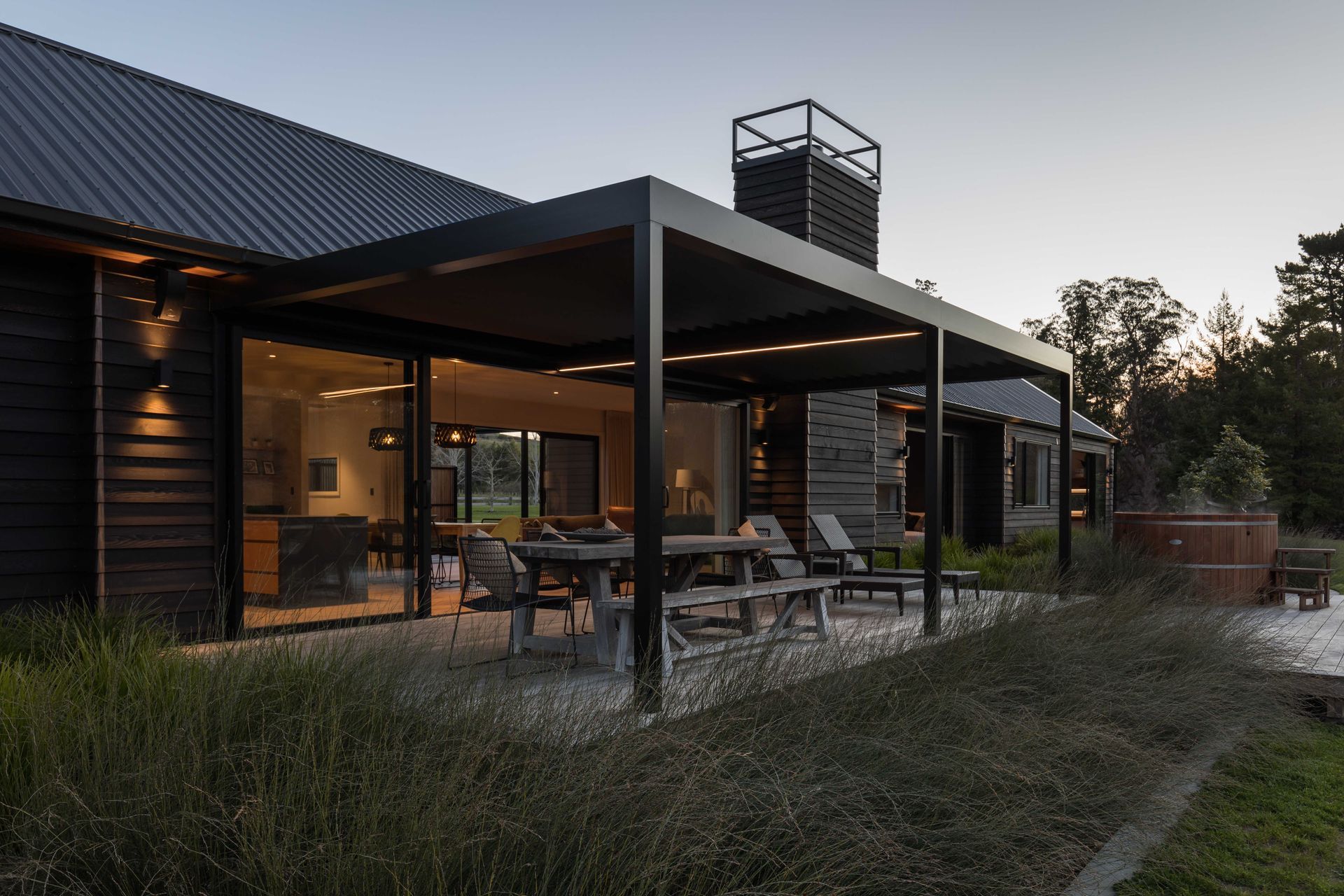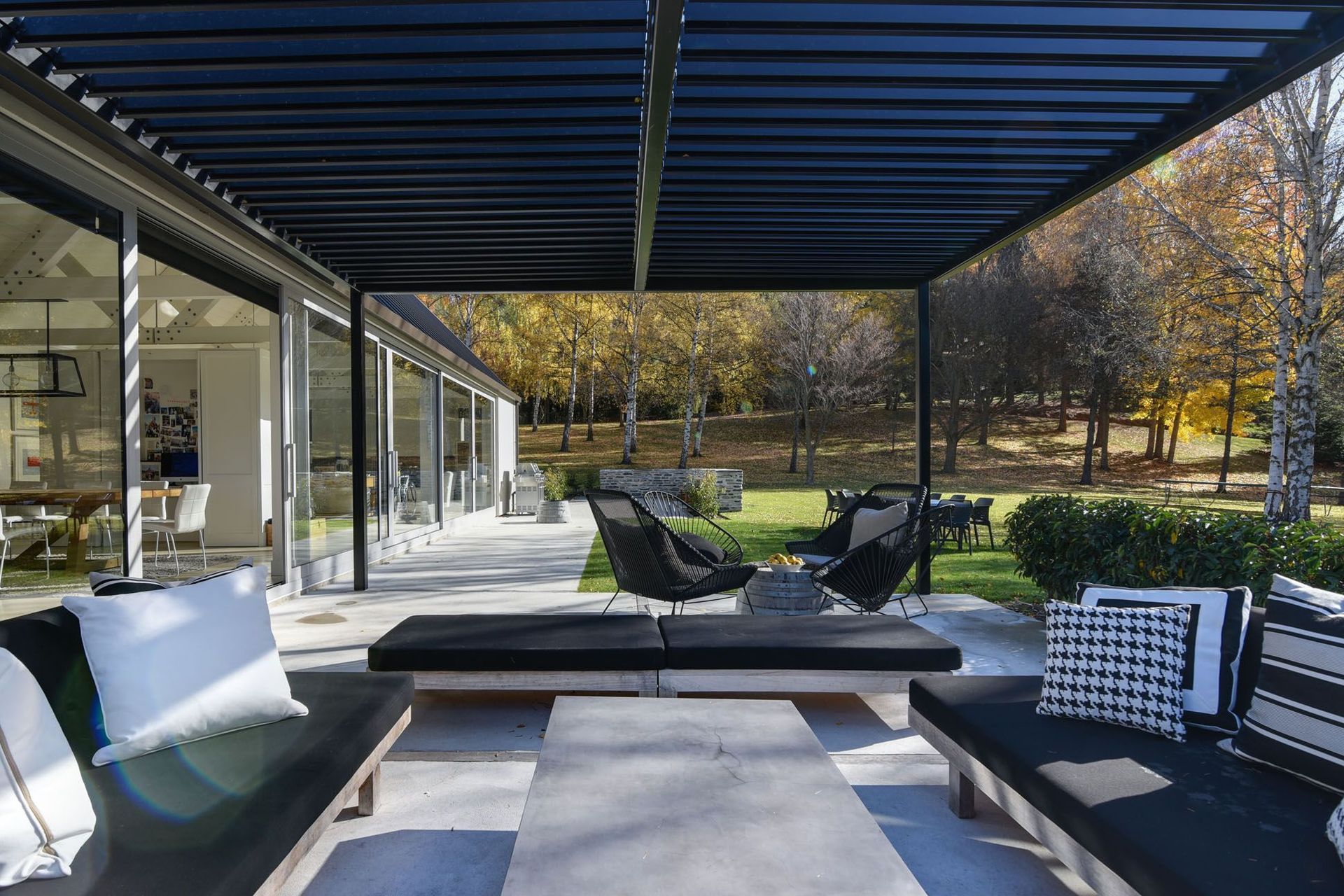The ultimate ‘outdoor room’ — and how to achieve it

Most of us have spent a higher than average proportion of time at home in the past two years, and there are many knock-on effects that are associated with this.
In terms of construction and architecture, this has translated into an increased appetite to make our homes more ‘liveable’ — to make better use of spaces, make them more comfortable, and even create brand new spaces where before they were underutilised.
When considering a move to create new spaces in an existing house, the first thought may be to extend or expand the house itself — a costly and logistically challenging prospect. But there’s another easier way: an outdoor room.
Converting an outdoor area into a semi-covered oasis not only makes the space more liveable and usable, but also more valuable, as it means the space can be used year-round.
Of course to have an outdoor room, you must first provide for a form of shelter, cutting it off from the forces of mother nature when she comes calling, and for this, louvres are the first port of call.

A means of protection from the elements
Outdoor living is an important hallmark in the homes of many New Zealanders, a fact that Locarno Louvres, a New Zealand-based louvre company that produces outdoor coverings for all climates throughout the country, knows well.
Nick Giblin, the project manager for Locarno Louvres, says many houses built decades ago were designed without much consideration for outdoor living — so it’s natural that there’s now a push from homeowners to create outdoor rooms themselves.
“A lot of people living in these older houses are looking to renovate their home to better suit the way that they live today,” says Nick. “There’s more of an emphasis on indoor/outdoor flow — and this can be achieved really successfully with big doors flowing on to a covered, protected outdoor area.”
Of course in order to make the most of the varying weather, it’s best that this protection can be opened and closed at will — covering the outdoor furniture when it rains, and opening up when the sun is out. This is the beauty of louvres, Nick says.
“It gives you the ability to control which weather is permitted to enter the space and which isn’t,” he says. “It gives you the flexibility to use a previously unused space during weather conditions in ways you couldn’t use it before.”

More than weather protection
It’s not just the direct effect of the elements that louvres can help combat: they can also be adjusted to allow as much sunlight as desired into the adjacent indoor spaces, where previously this was not possible.
“Light control is an important aspect of the function of louvres too,” says Nick. “In the winter you may want as much sunlight as possible, whereas in the summer you may want to limit it if it becomes too hot.
“So in this way, creating an outdoor room can give you not only an extra living space, but it can also enhance the liveability of your indoor space.”
Locarno Louvres’ motorised roof systems are designed specifically to cater to these kinds of rooms. They give complete control over to users, allowing them to access as much sunlight as possible; they’re sealed so that no precipitation falls through when they’re closed, and they have gutters to divert this away to drainpipes; they can even have internal rain sensors which automatically close the louvres when rain is detected.
“They are designed to protect outdoor rooms from the elements.”

What to consider when building an outdoor room
Of course each scenario is different, and each home will have different needs when installing louvres in an outdoor room. There’s the height: will it be flush with the current roof, or deviate? A lower roof is likely to feel more intimate, while a higher roof will feel more open and spacious. The height of the roof is also likely to affect how sunlight behaves — a roof that is too high can limit the amount of shade over the space, for example.
Then there’s the louvre profile itself: Locarno Louvres offers several different profiles to suit different applications. These are to account for the distinct roof spans that are required for different projects — an RL200 blade profile is ideal for spans up to 3.4 metres, for example, and its blades allow up to 85% sunlight penetration into the space.
There are also the aesthetics to think about, and Locarno offers several colours in its products. Dark colours like Matt Black and Flaxpod are the powdercoat finishes used most frequently on contemporary designs, while lighter colours like Matt Appliance White and Titania are used on more traditional house styles.
With such flexibility granted to a space that didn’t otherwise have it, many people who install louvres in their outdoor rooms are subsequently presented with even more options once they have decided to expand their outdoor space.
Many people don’t realise after creating their outdoor room that they can do anything with it — and now they can consider lighting, maybe a small kitchen to replace a barbecue, dedicated heating, and so on.
“It’s good to see — people embracing their outdoor area as a new place to build a room.”
Learn more about Locarno Louvres and its products and offerings.
